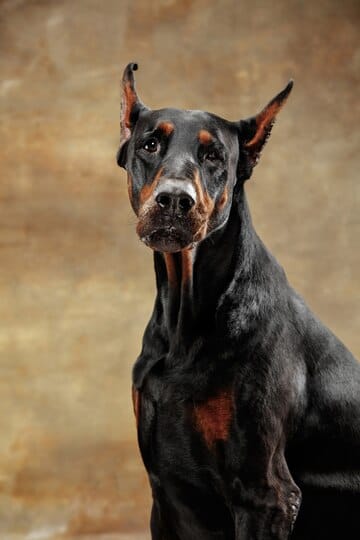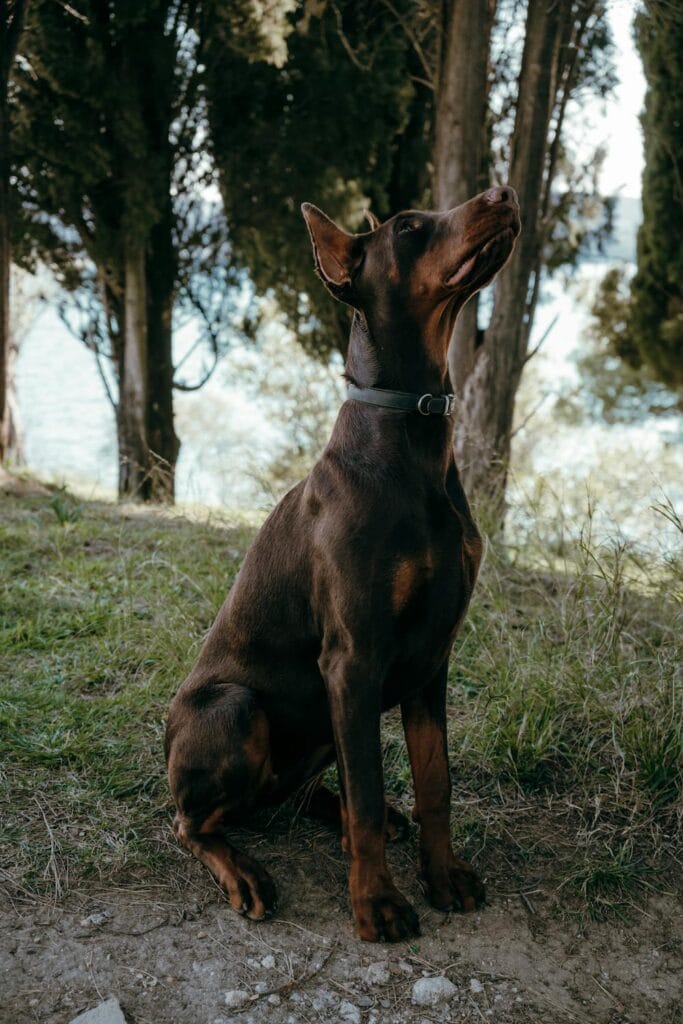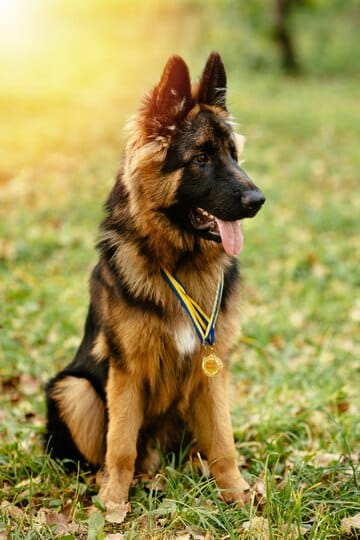- Causes of Eye Boogers in Poodles
- Treating and Preventing Eye Boogers in Poodles
- Maintaining Poodle Eye Health
- Case Study: Treating Eye Boogers in Poodles
- Expert Advice: Preventing Eye Boogers in Poodles
- Grooming Tips for Minimizing Eye Boogers in Poodles
- Grooming Case Study: Improving Eye Hygiene with Regular Trims
- Expert Grooming Tip: The Poodle Eye Trim
- Conclusion
Poodles, with their expressive eyes and curly coats, are beloved companions. However, like many breeds, they can sometimes suffer from eye discharge or “boogers.” Here’s a comprehensive look at why poodles get eye boogers and what you can do about it.
Causes of Eye Boogers in Poodles
There are several potential reasons why your poodle may have eye discharge or crusty buildup around their eyes:
- Tear Staining: Poodles are prone to tear staining, which can lead to reddish-brown stains around the eyes and wet, sticky discharge. This is often caused by excess tear production or blocked tear ducts.
- Allergies: Environmental allergens like pollen, dust, or certain foods can trigger an allergic reaction in poodles, leading to watery eyes and eye boogers.
- Infections: Bacterial or viral infections, such as conjunctivitis (pink eye), can cause eye discharge in poodles. These infections may be accompanied by redness, swelling, and squinting.
- Injury or Foreign Object: If your poodle has sustained an eye injury or has a foreign object stuck in their eye, it can lead to excessive tearing and discharge as the eye tries to flush out the irritant.
- Blocked Tear Ducts: Poodles can be prone to blocked tear ducts, which prevent proper tear drainage and lead to buildup and staining around the eyes.
- Dry Eye: Conversely, poodles can also suffer from dry eye (keratoconjunctivitis sicca), which can cause thick, sticky eye discharge as the eyes try to compensate for the lack of moisture.
- Epiphora: This condition, characterized by excessive tear production, can cause constant wetness and staining around the eyes.
Treating and Preventing Eye Boogers in Poodles
Here are some tips for addressing and preventing eye boogers in your poodle:
- Consult Your Vet: If you notice persistent or severe eye discharge, redness, swelling, or your poodle is squinting or pawing at their eyes, make an appointment with your veterinarian. They can properly diagnose the underlying cause and provide appropriate treatment, such as eye drops, ointments, or oral medication.
- Grooming and Hygiene: Regularly clean your poodle’s eyes with a damp, soft cloth or cotton ball to remove any buildup of discharge. Trim the hair around their eyes to prevent irritation and staining.
- Allergy Management: If allergies are the culprit, your vet may recommend antihistamines, immunotherapy, or dietary changes to minimize exposure to allergens.
- Tear Stain Removers: For tear staining, you can use gentle, vet-approved tear stain removers or wipes to help keep the area around the eyes clean and stain-free.
- Humidifiers and Eye Drops: If your poodle suffers from dry eye, using a humidifier and applying vet-recommended eye drops can help keep their eyes lubricated and comfortable.
- Surgical Intervention: In some cases, such as blocked tear ducts or severe epiphora, your vet may recommend surgical procedures to correct the underlying issue.
Remember, while occasional eye discharge is normal, persistent or excessive eye boogers can be a sign of an underlying health condition that requires veterinary attention. By addressing the root cause and maintaining good grooming habits, you can help keep your poodle’s eyes bright, clear, and booger-free.
Maintaining Poodle Eye Health
Preventing and treating eye boogers in poodles goes hand-in-hand with maintaining their overall eye health. Here are some additional tips to keep those expressive poodle peepers in top shape:
- Regular Eye Checks: During grooming sessions or playtime, gently examine your poodle’s eyes for any signs of redness, swelling, discharge, or discoloration. Early detection of potential issues can prevent more serious problems down the line.
- Proper Nutrition: A balanced, high-quality diet rich in essential nutrients like omega-3 fatty acids, vitamins A and E, and zinc can support eye health and reduce inflammation.
- Adequate Hydration: Ensure your poodle has access to fresh, clean water at all times. Proper hydration helps maintain tear production and prevents dry eye.
- Avoiding Irritants: Minimize your poodle’s exposure to irritants like smoke, strong odors, and harsh chemicals, as these can cause eye irritation and excessive tearing.
- Routine Grooming: Regular grooming sessions not only help keep the area around your poodle’s eyes tidy but also allow you to check for any abnormalities or concerns.
- Protecting During Activities: When engaging in outdoor activities or exposing your poodle to windy conditions or debris, consider using dog goggles or a protective eye shield to prevent injury or irritation.
- Seeking Prompt Veterinary Care: If you notice any sudden changes in your poodle’s eye appearance or behavior, such as squinting, pawing at the eyes, or excessive discharge, don’t hesitate to contact your veterinarian. Early intervention can prevent further complications and discomfort.
By following these proactive measures and regularly monitoring your poodle’s eye health, you can help minimize the occurrence of eye boogers and maintain their sparkling, bright-eyed look for years to come.
Case Study: Treating Eye Boogers in Poodles
To illustrate the importance of addressing eye boogers in poodles, let’s look at a real-life case study:
Bella, a 3-year-old standard poodle, was brought to the vet by her owners due to persistent eye discharge and staining around her eyes. The vet performed a thorough examination and diagnosed Bella with a combination of tear staining and a mild case of dry eye.
The treatment plan included:
- Tear Stain Remover Wipes: Bella’s owners were instructed to use gentle, vet-approved tear stain remover wipes daily to clean the area around her eyes and remove any buildup of discharge.
- Artificial Tear Drops: To address the dry eye issue, Bella was prescribed artificial tear drops to be administered twice daily to help lubricate her eyes and prevent further irritation.
- Dietary Supplements: The vet recommended adding a high-quality omega-3 supplement to Bella’s diet to help reduce inflammation and support eye health.
- Increased Water Intake: Bella’s owners were advised to encourage her to drink more water by providing fresh, clean water at all times and adding low-sodium broth or water to her food.
After several weeks of following this treatment plan diligently, Bella’s eye discharge and staining significantly improved. Her owners continued to maintain good grooming habits and monitor her eye health closely.
This case study highlights the importance of seeking veterinary attention for persistent eye issues in poodles and following a comprehensive treatment plan tailored to the underlying cause. With proper care and management, most cases of eye boogers in poodles can be effectively addressed, ensuring your furry companion’s eyes remain bright, healthy, and booger-free.
Expert Advice: Preventing Eye Boogers in Poodles
To provide further insights on preventing and managing eye boogers in poodles, let’s hear from Dr. Emily Wilson, a veterinary ophthalmologist with over 15 years of experience:
“Poodles are certainly prone to eye discharge and staining due to their unique facial structure and tear duct anatomy,” says Dr. Wilson. “While occasional eye boogers are normal, persistent or excessive discharge can be a sign of an underlying issue that requires prompt attention.”
Dr. Wilson emphasizes the importance of regular eye checks and grooming to catch any problems early. “During grooming sessions, gently wipe away any discharge with a damp, soft cloth or cotton ball, and check for any abnormalities, such as redness, swelling, or irregularities in the eye itself.”
When it comes to prevention, Dr. Wilson recommends keeping the area around the eyes trimmed and clean. “Long hair around the eyes can trap moisture and debris, leading to irritation and staining. Regularly trimming the hair and using a gentle, vet-approved eye cleaner can help minimize buildup.”
For poodles prone to tear staining, Dr. Wilson advises addressing the underlying cause. “Tear staining can be caused by a variety of factors, including blocked tear ducts, excessive tear production, or even diet. Working with your vet to identify and treat the root cause is key to managing this issue.”
In cases of dry eye, Dr. Wilson suggests using artificial tear supplements and increasing water intake. “Poodles with dry eye often benefit from daily eye drops or ointments to lubricate the eyes and prevent further irritation and discharge.”
Regarding allergies, Dr. Wilson recommends identifying and avoiding potential triggers. “Environmental allergens like pollen, dust, or certain foods can cause eye irritation and discharge in poodles. Working with your vet to pinpoint the allergen and make appropriate dietary or environmental changes can help alleviate the issue.”
Lastly, Dr. Wilson emphasizes the importance of seeking prompt veterinary care for any persistent or severe eye issues. “Eye problems in poodles should never be ignored, as they can progress and potentially lead to more serious complications if left untreated.”
By following expert advice, maintaining good grooming habits, and addressing any underlying issues promptly, poodle owners can help keep their furry companions’ eyes healthy, clear, and free from those pesky eye boogers.
Tables and Resources:
| Common Eye Conditions in Poodles | Symptoms | Treatment Options |
|---|---|---|
| Tear Staining | Reddish-brown stains around eyes, wet discharge | Tear stain removers, addressing underlying cause (e.g., blocked tear ducts) |
| Allergies | Watery eyes, eye boogers, redness | Antihistamines, allergen avoidance, immunotherapy |
| Conjunctivitis (Pink Eye) | Redness, swelling, discharge, squinting | Antibiotic eye drops or ointments |
| Dry Eye | Thick, sticky discharge, discomfort | Artificial tears, increased humidity, tacrolimus/cyclosporine drops |
| Epiphora | Excessive tearing, wet face | Tear duct flushing, surgery if severe |
For more information on poodle eye care and booger prevention, check out these reliable resources:
Remember, with proper care, attention, and regular veterinary checkups, you can help keep your poodle’s eyes bright, healthy, and free from those pesky eye boogers.
Grooming Tips for Minimizing Eye Boogers in Poodles
Proper grooming plays a crucial role in preventing and managing eye boogers in poodles. Here are some expert grooming tips to keep those poodle peepers clean and healthy:
- Regular Trims: Keeping the hair around the eyes trimmed short is essential. Long hair can trap moisture, dirt, and debris, leading to irritation and staining. Use sharp, high-quality grooming scissors or clippers to carefully trim the hair, being cautious not to get too close to the eyes.
- Gentle Cleaning: Use a soft, damp cloth or cotton ball to gently wipe away any eye discharge or buildup around the eyes. Avoid rubbing too vigorously, as this can further irritate the delicate eye area.
- Eye Cleansers: Consider using a vet-approved eye cleansing solution specifically formulated for dogs. These solutions can help remove stubborn stains and discharge without causing irritation.
- Grooming Tools: Invest in high-quality grooming tools designed for poodles’ curly coats. Slicker brushes, combs, and deshedding tools can help remove loose hair and prevent matting around the eyes.
- Tear Stain Powder: For persistent tear staining, you can try using a tear stain powder or paste designed to absorb and lift stains from the fur around the eyes. These products should be used sparingly and according to the manufacturer’s instructions.
- Bathing and Drying: When bathing your poodle, be careful not to get soap or water directly in their eyes. After bathing, gently dry the area around the eyes with a soft, clean towel.
- Seek Professional Help: If you’re unsure about properly trimming the hair around your poodle’s eyes or have concerns about their eye health, don’t hesitate to seek the help of a professional groomer or your veterinarian.
Grooming Case Study: Improving Eye Hygiene with Regular Trims
Lucy, a 5-year-old miniature poodle, was prone to frequent eye boogers and tear staining. Her owners noticed that the longer her facial hair grew, the more discharge and staining they would see around her eyes.
After consulting with their groomer, they implemented a regular trimming schedule to keep the hair around Lucy’s eyes short. The groomer used sharp, curved scissors and carefully trimmed the hair, being cautious not to cut too close to the eyes.
Additionally, Lucy’s owners started using a vet-recommended eye cleansing solution and a soft cloth to gently wipe away any discharge or buildup after each grooming session.
Within a few weeks, Lucy’s owners noticed a significant improvement in her eye hygiene. The shorter hair around her eyes prevented moisture and debris from accumulating, and the regular cleaning helped keep the area clean and stain-free.
This case study highlights the importance of regular grooming and trimming for poodles prone to eye boogers and staining. By maintaining a short, well-groomed facial trim and incorporating gentle cleaning routines, poodle owners can help minimize eye discharge and keep their furry companions’ eyes looking bright and healthy.
Expert Grooming Tip: The Poodle Eye Trim
For a professional grooming perspective, let’s hear from Sarah Thompson, a certified master groomer with over 20 years of experience:
“One of the most important grooming techniques for poodles is the eye trim,” Sarah explains. “This involves carefully trimming the hair around the eyes to create a neat, rounded shape that accentuates the eyes while preventing hair from irritating or obstructing the vision.”
Sarah recommends using sharp, curved scissors specifically designed for trimming around the eyes. “Hold the scissors parallel to the eye, and trim the hair in small snips, being extremely cautious not to cut too close to the delicate eye area.”
In addition to the eye trim, Sarah emphasizes the importance of regular brushing and combing around the eyes. “Use a slicker brush and a metal
greyhound comb to gently brush out any tangles or mats around the eyes. This helps prevent matting, which can trap moisture and lead to staining and irritation.”
For poodles prone to tear staining, Sarah suggests using a gentle, tearless eye cleansing solution and soft cotton pads to wipe away any discharge or stains after grooming. “This simple step can make a big difference in keeping the eye area clean and preventing further staining.”
Overall, Sarah stresses the importance of seeking professional grooming advice and assistance, especially when it comes to trimming around the delicate eye area. “A skilled groomer can not only keep your poodle looking their best but also help identify and address any potential eye or skin issues before they become more serious problems.”
By following expert grooming techniques and maintaining regular grooming routines, poodle owners can help minimize eye boogers, tear staining, and keep their furry companions’ eyes healthy and beautiful.
Conclusion
Eye boogers and discharge can be a common issue for poodles, but with proper care and attention, it’s a problem that can be effectively managed. By understanding the underlying causes, seeking veterinary advice when needed, and implementing regular grooming routines, poodle owners can help keep their furry companions’ eyes clear, bright, and booger-free.
Remember, prevention is key. Regularly checking your poodle’s eyes, maintaining good grooming habits, and addressing any issues promptly can help avoid more serious eye problems down the line. With the right approach, those expressive poodle eyes can remain healthy and beautiful for years to come.
So, the next time you notice those pesky eye boogers, don’t fret. Armed with the knowledge and tips from this comprehensive guide, you’ll be well-equipped to tackle the issue and keep your poodle’s eyes looking their best.































